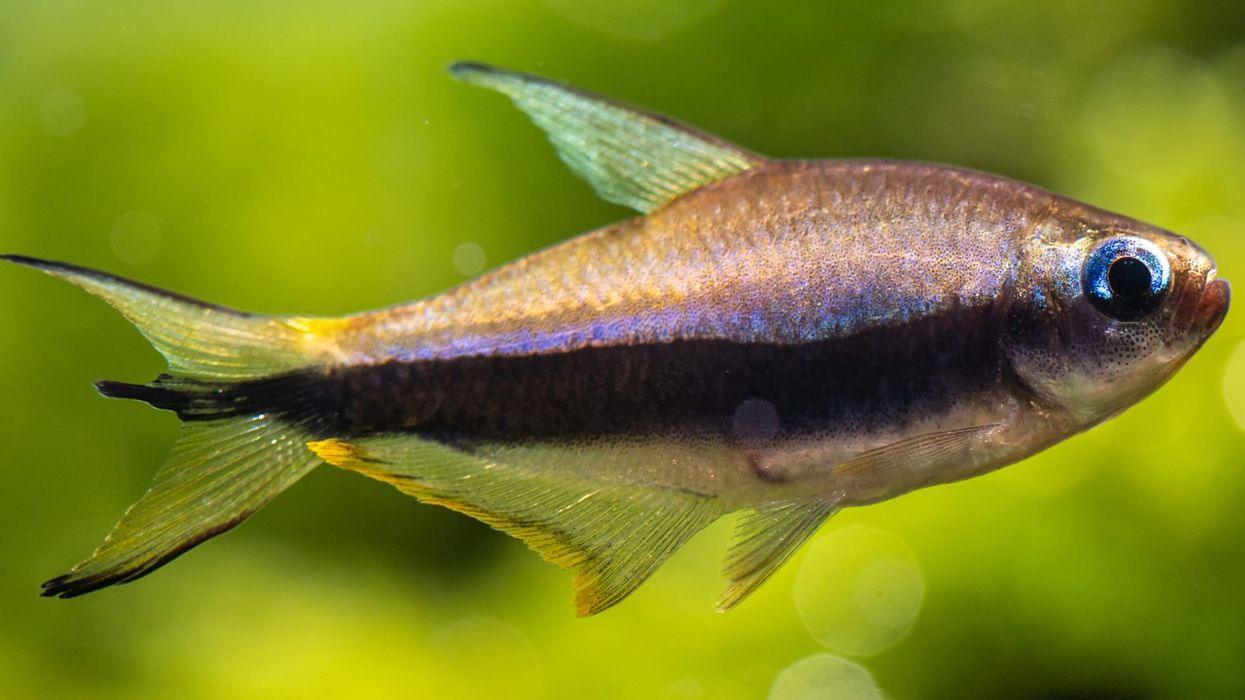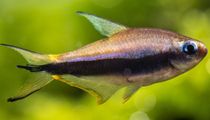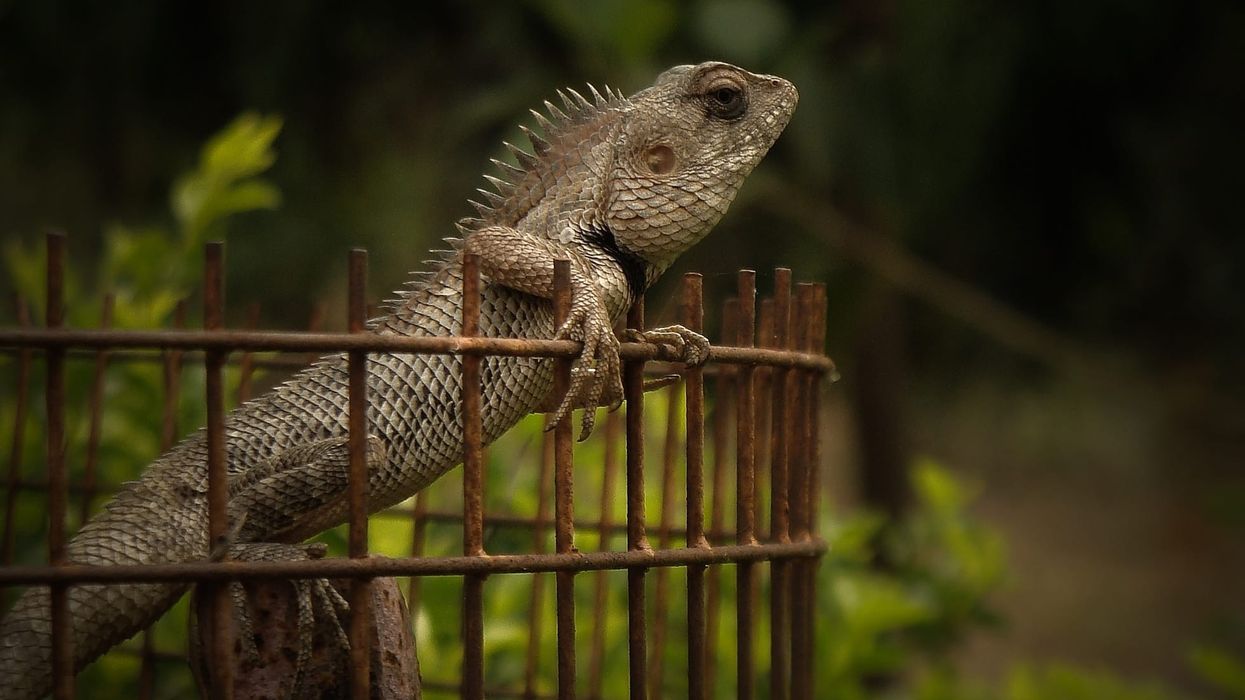The emperor tetra (Nematobrycon palmeri) is a species of fish that originated from Columbia and is found in South America.
These tetras are a peaceful and social type of fish often seen in a pair or group. These are some of the best aquarium tetras as they are easy to pet and have very minimalistic needs to survive.
The water conditions must be favorable to these tetras to keep them in aquariums, and the temperature must be between 73-80 F (23-27 C).
These are omnivorous fish that eat foods like plants and insects, mosquito larvae, and crustaceans. These tetras are found in several colors, which make them really attractive.
Females lay about 50-100 eggs per spawn, and after a gestation period of about seven to nine months, the eggs hatch into fully developed fry. These tetras have a stripe from their eyes to tails, which makes it easy to identify them. To know more about these tetras, go through this article.
If you liked reading about these facts about emperor tetras, you could also check out some facts on the pumpkinseed sunfish and longhorn cowfish.
Emperor Tetra Interesting Facts
What type of animal is an emperor tetra?
The emperor tetra is a breeding species of fish that is found in South America.
What class of animal does an emperor tetra belong to?
Emperor tetra fish belongs to the class of ray-finned fishes (Actinopterygii). They are tetras, to be more specific.
How many emperor tetras are there in the world?
There has been a decent increase in their population from the origin of these fishes, but the exact number of breeding individuals is unknown.
Where does an emperor tetra live?
This fish species is known to live in communities in freshwater resources like seas and oceans and a great choice for aquariums.
What is an emperor tetra's habitat?
The origin of the emperor tetra is the San Juan river basins in Columbia. This fish prefers subdued lighting and freshwater as its biological and natural home or ecosystem. They feed on crustaceans and larvae, which are generally present in freshwater resources.
Who do emperor tetras live with?
The emperor tetra is a very social fish and is known to stay in groups or a community of five to six members. They are also seen living in pairs.
How long does an emperor tetra live?
This fish is known to have a lifespan of about six years in the wild and eight years in the aquarium if properly taken care of. The emperor tetra lifespan depends on a lot of factors like water conditions and natural predators.
How do they reproduce?
The spawning begins at night, and the emperor tetra (pregnant) lays about 50-100 eggs. The parents are often seen consuming the eggs after spawning. The emperor tetras' gestation is about seven to nine months, after which the eggs turn into fry.
What is their conservation status?
The emperor tetra (Nematobrycon palmeri) has a current conservation status of Data Deficient. The exact number of breeding individuals is unknown. These peaceful fish species face much vulnerability in the wild and are food sources for many aquatic animals.
Emperor Tetra Fun Facts
What do emperor tetras look like?
These fish are unisex, and males can be easily differentiated from females. The male fish have longer dorsal and caudal fins.
These organisms have attractive body colors like golden, rainbow, blue and red, and have short tails and fins. The emperor tetras' eye color signifies the sexes, too, as blue eye colored fish are male and green eye colored fish are female. They have a black stripe starting from the eye to the tail.
How cute are they?
The emperor tetra is one of the cutest aquarium fishes of all. They are small with small fins and mouths and have attractive body colors that make them very cute.
These breeding fish are extremely beautiful creatures as their scales are in various colors like blue, golden and the most attractive amongst all is the rainbow tetra fish. These fish are known to be very social and live in a community. They are very peaceful, which makes them a great choice for aquariums.
How do they communicate?
The emperor tetra (Nematobrycon palmeri) is known to be sexually dimorphic. They communicate with each other by actions and fighting for territory as the males are known to be quite territorial.
How big is an emperor tetra?
The emperor tetra size (average adult size) is 2-3 in (5-8 cm) in length. The weight of this fish species is not known precisely and differs from fish to fish. These fish are considered to be small-sized aquarium fishes and don't grow much. These breeding fish are nearly ten times the size of the worms they feed on.
How fast can an emperor tetra swim?
These living organisms live in a community and are great aquarium fish that need efficient water conditions to live in an aquarium. If we talk about the swimming abilities of these fish, they are great swimmers and prefer steady and mild water currents as they become stressed in fast water currents.
The exact swimming speed is not known, but these aquarium fish are very quick and fast.
How much does an emperor tetra weigh?
The emperor tetra is a small fish breed that lives in freshwater resources and is a great aquarium fish. The exact weight of this breeding fish is not known, but by their physical appearance and body size, they won't weigh much.
The weight of this community fish varies, but they are generally considered to be small fish with less weight. Similar tetras such as the black neon tetras weigh 0.004 oz (0.12 g) and the congo tetras weigh 3.5 oz (0.1 kg).
What are the male and female names of the species?
The emperor tetra species does not have any particular names for males and females. They are referred to as Nematobrycon palmeri when it comes to the scientific naming of this species.
These fish have names according to their body and eye colors; the rainbow emperor tetra is very colorful, the black emperor tetra has black eyes, the purple emperor tetra is purple in color, the red emperor tetra has a red body, and the blue emperor tetra has a blue body.
What would you call a baby emperor tetra?
The baby emperor tetra fish is generally referred to as fry. The baby fish are very vulnerable in the wild but face no danger when kept in an aquarium.
In the wild, these babies and the eggs of these fish are eaten by many bigger fishes, sharks, and other aquatic life creatures, but in the aquariums, they are completely safe and can be taken care of easily as there are no predators.
What do they eat?
Emperor tetras are omnivorous organisms, and the adult fish are known to eat both plants and insects and their larvae. The diet of this freshwater fish includes live foods like mosquito larvae, bloodworms, and daphnia majorly, and apart from this, they are also seen eating plant matter and fish food.
They also enjoy eating frozen fish food, including frozen bloodworms. In the wild, the emperor tetras are seen only feeding on worms and crustaceans.
The emperor tetra (juvenile) or the fry is known to feed more on plants and mosquito larvae than worms and insects. In their biological habitat, these aquarium fish are hunted by bigger fishes and sharks.
Are they aggressive?
No, most tetra species are not very aggressive and are rather peaceful and calm tank fishes.
Normally, the emperor tetra aggression is very minimal if there are about five to six members in the tank, but they become more aggressive if the count is increased or decreased. The red emperor tetra is also one of the famous tank fish and is not very aggressive when kept in groups.
The black emperor tetra is known to be the least aggressive amongst all other tetra fish species and does well in groups of about eight members; as the number of fishes in the tank increases, the aggression of these fishes increases.
Would they make a good pet?
Yes, emperor tetras are the fish species known to be quite calm and do well in fish tanks. The emperor tetras' tankmates must be around five to six in number with one alpha male.
They are social fish and do well in groups and must not be kept alone in a tank. The emperor tetra care can be easy as it is a very peaceful fish species, and they can be bred in a small tank.
The minimum tank size that this fish species, native to South America, requires is about 10 gal (38 l), and the water conditions and water temperature should be favorable to live. They eat both live foods and other frozen fish food.
They do pretty well when kept in a pair. Floating plants can be a great way to give a sense of the natural ecosystem for this fish in the aquarium.
If you're looking to breed them, ensure to keep the male and female separate for two days and make sure to give them live food. Keep the temperature between 80-82 F (27-28) and a water pH level of seven. After two days, keep them in the same tank, and the mating process will then commence.
Did you know...
Male black emperor tetras have blue eyes, whereas the female is known to have green eyes.
The emperor tetra prefers freshwater as its habitat and is native to San Juan river basins from Columbia.
Fin nipping may happen amongst these fishes in the community tanks.
The emperor tetra school will survive really well in a community of five to six individuals.
What happened to the emperor tetra in 2014?
As of 2014, the IUCN Red List (International Union For Conservation Of Nature And Natural Resources) has insufficient data to determine the status of this species in its natural habitat in the wild. The IUCN faced Data Deficiency (DD) when determining the conservation status of these freshwater fish.
As of now, the species is known to be Not Extinct, and there is no count of the fish that are living in the wild. Their relative species, the glowlight tetra's conservation status is Not Listed.
How to tell the differences between male and female emperor tetras?
The dorsal and caudal fins of the male are noticeably longer and more pointed than the female. Also quite noticeable in the male is an extended ray in the middle of the caudal fin that gives the tail the appearance of a trident.
The anal fin of males is generally longer than females, too, in tetra species. The pair is therefore sexually dimorphic, with many differences in appearances based on sexes.
Here at Kidadl, we have carefully created lots of interesting family-friendly animal facts for everyone to discover! For more relatable content, check out these x-ray tetra facts and peacock cichlid facts pages.
You can even occupy yourself at home by coloring in one of our free printable purple emperor tetra coloring pages.










